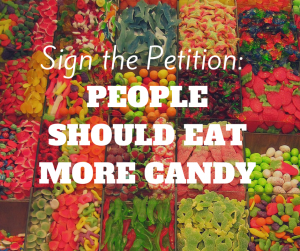We’ve shared lots of best practices on the blog (check out our best practices tag for proof!). But for this post, we wanted to put all of our best Facebook advice in one place–and add in some new best practices, for folks who’ve been following along the whole time. We’ve compiled a master list of what we’ve learned from running comprehensive tests about what works to drive greater engagement from social sharing on Facebook, and what falls flat. All of the results included here are from tests that had statistically-significant results.
Here’s what we’ve learned.
Time-tested best practices
- Make a clear ask: Being clear with your ask in the Facebook headline leads to higher action rates, because the audience clicking through knows what they’re there to do.
- Example: “Sign This Petition: Save the Whales” is better than “Whales are in trouble!”
- Don’t be afraid to test wacky ideas: If you’re using ShareProgress, traffic will automatically be routed to your best-performing idea. So if you have an out-there idea to test, you can do it without worrying about losing a big chunk of your audience if it doesn’t work out.
- Example: The possibilities are endless! What happens if you use an emoticon in your Facebook headline, or if you play off a current pop culture event, or if you use abbreviations? You won’t know until you try.
New experiments!
- Use a “Sign the Petition” image: It doesn’t have to be anything fancy. But using an image with the words “Sign the Petition” for the Facebook thumbnail increased engagement rate by 19% as compared to images without those words.
- Example (with an apology to any dentists reading this post):
- Don’t use a description: Facebook gives you the option to add descriptive text along with a link, and it seems like a good way to explain a bit more about your action. But does it actually lead to more actions? Skipping the description actually led to a 7% increase in engagement rates on Facebook posts. So if you’re rushed for time, you can feel confident that skipping the description won’t decrease your action rates (just make sure the link headline and image are descriptive!).
- Example: A Facebook description of “ ” works better than “I just signed this petition, will you join me?” (or anything else, for that matter).
Some of these ideas aren’t necessarily the result you’d expect. Who knew that skipping a Facebook description could increase engagement rates? This is just another reminder of the value of testing all of the ideas you’ve had–even if you think you might already know the answer. That’s why we encourage you to test these best practices to make sure that they work best for your audience and your organization. If you come up with your own best practices along the way, be sure to let us know!



Comments